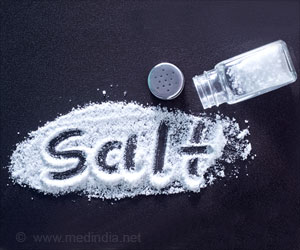World Environment Day (WED) is observed annually on 5th June by the United Nations. The main aim of the campaign is to create awareness of the environment and specific environmental issues. The theme for this year 2018 is Beat Plastic Pollution.
- World Environment Day (WED) is observed annually on 5th June by the United Nations
- The main aim of the campaign is to create awareness of the environment and specific environmental issues
- This year the theme is “Beat Plastic Pollution”
- India will be the global host for World Environment Day 2018
Every year World Environment Day has a different global host country, where the official celebrations take place. India is the global host of World Environment Day 2018 with the aim to raise awareness on plastic pollution and its harmful effects.
Aim of the Campaign
The campaign recommends governments, industry, communities, and individuals to join hands to preserve and conserve our own Mother Earth against life-threatening plastic that pollutes every corner of the Earth. This may pave the way in finding sustainable alternatives that can reduce the production and excessive use of single-use plastic polluting and contaminating soil and oceans thereby, affecting marine life and threatening human health.Beat Plastic Pollution
Every day we use plastic in many forms such as bottles, food containers, garbage and grocery bags, electronic appliances, coffee cups, lids and the list goes on endlessly. Even though plastic products are very convenient to use, they play a serious role in polluting the environment.In the marine environment, a plastic bottle can last for 450 years which can gradually fragment into smaller and smaller pieces which ultimately end up microscopic but never truly go away.
Facts and Statistics on Plastic Pollution
- World uses nearly five trillion plastic bags every year
- Americans use nearly 100 billion plastic bags every year
- Each year, about 13 million tonnes of plastic end up in the oceans
- Nearly, 269,000 tons of plastic pollution may be floating in the world’s oceans
- More than 150 plastic bottles litter each mile of UK beaches
- Almost, 50 percent of the plastic we use is single-use or disposable
- Every minute, nearly two million single-use plastic bags are distributed globally
- Nearly, one-third of the plastic packaging escapes collection systems, which ends up clogging the drains and polluting environment
- Approximately, one million plastic bottles are purchased by people every minute around the world
- Plastic makes up 10% of all of the waste we generate
- Every year, about 100,000 marine mammals and turtles and one million seabirds are killed by marine plastic pollution
Who is affected by Plastic Pollution?
Animals and Birds: Plastics are thrown away carelessly. Animals and birds unknowingly mistake it for food and ingest this toxic plastic, which blocks the digestive tract, gets lodged in animals windpipes reducing the airflow causing suffocation, or fills the stomach, resulting in malnutrition, starvation and potentially death. It is found that trash often accumulates in the animals’ gut and provide a false sense of fullness thereby, causing the animal to stop eating and gradually starve to death.Marine Creatures: Plastic greatly affects marine life on shore and offshore from the huge whale, ting fish, sea lions, and seabirds to the microscopic organisms called zooplankton.
Human: Garbage waste including plastic waste affect human life. Contamination may cause serious dreadful infectious diseases. Burning plastics may lead to exposure to toxic chemicals and carcinogenic substances which increase the risk of respiratory disorders and cancer.
Who is to be blamed?
Behind every piece of littered plastic debris, there is a human face. This defines someone, somewhere, mishandled it, either thoughtlessly or deliberately.Plastic pollution can be found on every beach in the world, from busy tourist beaches to uninhabited, abandoned and tropical islands.
The shores of the sea offer a variety of evidences such as -
- cigarette filters and cigar tips
- fishing line, rope, and gear
- baby diapers and nappies
- food wrappers, beverage bottles and cans
- disposable syringes
- old tires
References:
- India to host World Environment Day 2018 - (https://www.unenvironment.org/news-and-stories/press-release/india-host-world-environment-day-2018)
- Plastic Pollution - (http://plastic-pollution.org/)
- Earth Day 2018 | End Plastic Pollution - (https://www.earthday.org/2018/03/07/fact-sheet-end-plastic-pollution/)
- Plastic Pollution – Facts And Figures - (https://www.sas.org.uk/our-work/plastic-pollution/plastic-pollution-facts-figures/)
Source-Medindia









